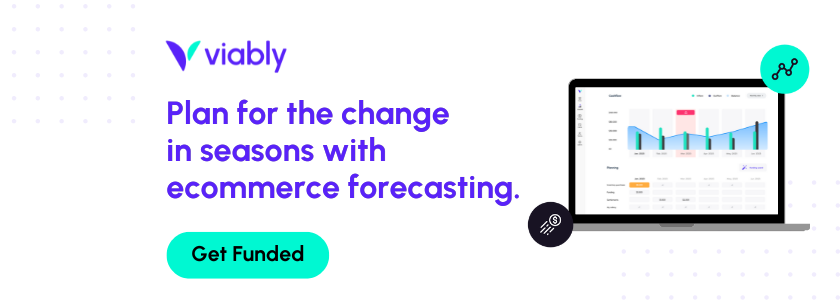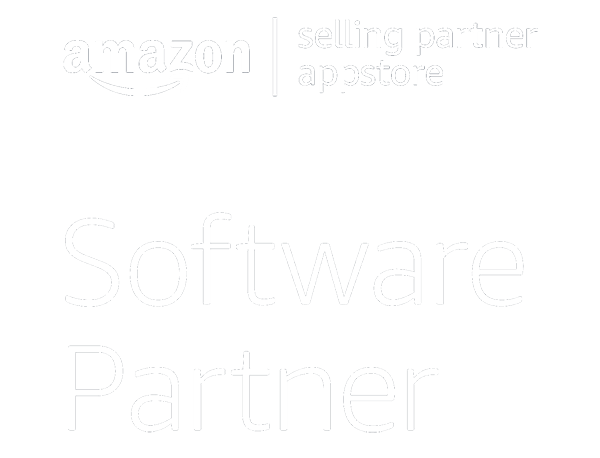In order to successfully manage your cash flow as an Amazon seller it’s crucial to have an answer to the question, ‘When does Amazon pay you?’. While they might seem obvious, Amazon seller payment schedules aren’t always crystal clear due to Amazon account level reserves, varying payments terms, and the payout schedules you qualify for based on your history and working capital products.
You picked great products to sell on Amazon, found solid suppliers, and created successful product listings. Now your products are starting to sell. This is all great news, but you’ll need more inventory to back it up. So, the question remains, when do you get paid?
In this blog post, we’ll cover everything you need to know about Amazon payment schedules. We’ll discuss when and how payments are made, what might cause delays, and how to offset cash flow challenges that result from payment delays. By the end of this blog post, you’ll have a clear understanding of the Amazon seller payment schedules and how to optimize it for your cash flow.
When does Amazon Pay You?
Make a sale, get paid, right? Well, not exactly.
After a customer makes a purchase, revenue will enter your Amazon seller account immediately. However, these funds go on hold, and will only be released to your bank account every 14 days. Even then, some of your revenue may continue to be held and released later down the line.
Why?
Part of the appeal of Amazon as an ecommerce marketplace is that they handle the customer experience. This includes everything from chargebacks to disputes and, as a result, Amazon is responsible for distributing refunds to customers so they hang on to the money a little longer. Generally speaking, you’ll wait at least a couple of weeks from the time of sale until the money hits your account. More on the cash flow implications of this in a moment.
Account Level Reserve
The answer to “When does Amazon pay you?” also depends largely on your account level reserve. In order to account for any issues that customers might encounter that trigger a refund request, Amazon requires that a percentage of your revenue remains in an Amazon-controlled bank account. This bank account, known as your account level reserve, can be thought of as an insurance policy for your business. By setting aside a portion of your revenue in your account level reserve you’re helping to ensure that you’ll likely never have to pay back money already deposited to your bank account.
The amount of money required to remain in your account level reserve is determined by your sales history and the performance of the business in terms of return rates, Seller ratings, and more. There are three tiers to Amazon account level reserves, and the higher your tier the less money you’re required to keep in reserve. As you become a more experienced seller and maintain a healthy account standing your tier will improve and you’ll see less and less money tied up in holds.
How does Amazon pay sellers?
Amazon requires sellers to connect a valid bank account where they’ll deposit your revenue. It doesn’t need to be a business bank, but there are many good reasons to open one opposed to using your personal account.
After a customer places an order from your Amazon business, the payment is processed and funds are helped “in escrow” for a minimum of 14 days. Once you have shipped the product to the customer and have waited the allotted time, Amazon will disburse funds from your seller account to your checking account via ACH transfer or other deposit method. If there’s an issue with the transfer, Amazon will hold your funds until it’s resolved. This transfer also requires a three day security freeze if you switch the bank account connected to Amazon Seller Central.
Amazon Seller Payment Terms
Standard terms for Amazon Seller payment schedules state that professional sellers should be paid every 14 days for orders that are delivered within 7 days of their estimated delivery date. However, orders that are delivered within 7 days of your next scheduled payment date may be delayed even further due to processing times.
Despite these standard biweekly terms, Amazon sellers have some flexibility in their payment schedules and can also select to receive payments on a daily or weekly basis. The more established you are as a seller, the more options for expedited Amazon payments are available to you.
Amazon Daily and Next Day Payments
While you’re stuck waiting for a minimum of two weeks for Amazon to transfer money to your bank account, there are alternative routes to get paid sooner. Both Daily Payouts and Next-Day Payouts will grant you access to funds much faster than standard Amazon terms.
Daily Payouts – Although there’s no way to automatically send daily payouts to your bank account, you can still utilize the “Request Transfer” button in your Amazon Seller Central dashboard to request early payouts. Remember, this is still not a real-time payout. You’re requesting the money from orders placed 14 days ago and have become available today.
Next-Day Payouts – If you’re a long-term, experienced Amazon seller with a superb track record you might qualify for Next-Day Payouts. Outside of Amazon’s standard payment schedule terms, you’ll need a 3rd party instant access solution. These solutions work by purchasing receivables Amazon owes you and can help you access up to 80% of your revenue the following day.
Next day Amazon payout services, like Viably Cash Advance, can help you improve your cash flow, increase your buying power, and drive growth for your business month over month.
It’s been 14 days and you haven’t been paid. Why not?
There are several reasons why sales you made within a certain pay period may not be released when you expect. Here are a few to consider:
- Funds on hold: Your sales revenue may still be in the holding period after shipment. This can happen if an item is delivered more than 7 days after the estimated date or within the week before your payment is scheduled. In this case, you’ll have to wait for the next disbursement period to collect.
- Manual review: Amazon sometimes flags payments for manual review, which can delay the payment process.
- Insufficient funds: Your seller account must have sufficient funds to cover your payout before Amazon will release the funds to your bank account. This can result from chargebacks to customers or other unanticipated transactions.
- Bank details: Make sure that your bank details are all correct and up-to-date in Seller Central. Amazon will hold your funds if the bank rejects the transfer, or if you enter details incorrectly. Amazon also has a 3-5 day waiting period for new bank accounts that have the potential to delay your scheduled payments even longer.
- Tax Information: If you’re a new seller, make sure to fill out all of your tax information correctly in Seller Central so that payments can be released on time and you don’t face any issues further down the line.
- Payment hold related to order issues: Amazon may put a hold on payments if there is an issue with orders placed on its platform (if there are customer disputes or chargebacks, for example).
Cash flow issues resulting from payment delays
Payment delays are a reality of selling on Amazon, and so are the resulting cash flow issues. This can be especially difficult for sellers who are early in their business growth—they rarely have the cash reserves or the diversity of revenue streams to reinvest in the business. It can also be difficult during busy seasons, where sellers front load on inventory, sell it quickly, and need to replenish before they can fully realize all of their revenue.
Many Amazon sellers fall into the early trap of spending too much of their available cash on their first orders. This creates a cycle of waiting for sales, and then waiting an additional 14 days for the next payout before they’re capable of buying new inventory. Ask any successful Amazon business—this will lead to stock outs and crush your momentum. As a general practice, you should be able to fund three cycles of inventory before you collect the revenue from your first sale.
The best way to manage cash flow issues resulting from delayed Amazon payouts is by planning ahead and budgeting accordingly. Many sellers adopt a strategy of placing smaller orders more often in order to keep their cash conversion cycle from grinding to a halt due to stockouts or delays in Amazon seller payment schedules. However, if you’ve secured a popular product that necessitates more inventory in order to avoid running out of stock, cash advance products can be a useful tool to streamline cash flow.
Cash Advance Products
Cash advance products help boost your cash flow by expediting your access to working capital. For a young Amazon business looking to drive sales and avoid those cash flow crunches that stunt growth, this is a huge advantage. Not only can you have access to your revenue as soon as tomorrow, you can turn that money over faster to reinvest in your success.
It’s important to find a cash advance product
Keep in mind the two week payment schedule, allocate some of your sales profits into savings, and use a free app like Viably to track your cash flow.
Keep Your Store Running Between Amazon Seller Payment Schedules
With the right planning, you can sustain healthy cash flow to build a profitable business. Growth is a different story. To truly hit your goals, you’ll need to scale your inventory orders, your marketing campaigns, and your daily operations. Waiting 2-3 weeks for every sale makes this feel close to impossible. You need a resource that will allow you to take advantage of more opportunities sooner, without crippling your business.
That’s where ecommerce funding comes in. As you develop your skills as an Amazon seller, you will grow your sales to a point where you qualify for funding that can help take your business to the next level. With external support you’ll be able to access money upfront for larger orders or product launches, without digging into your personal savings, and pay it back over time as your sales are disbursed. Plus, improved buying power for inventory is just the beginning of what working capital can do for your business. With extra money on hand you can take advantage of time sensitive opportunities, diversify your catalog, upgrade PPC campaigns, and much more.
At the same time, ecommerce funding can be the safety net that you need in order to start building up your own preventative measures against financial instability. By taking on working capital you can start to allocate a percentage of your sales to an Emergency Fund first, and eventually a “Sleep Well at Night” buffer. By having these cash reserves in place and available you will ensure that your Amazon business is resilient against fluctuations in sales, cash flow, and more. A sustainable amount of external funding has the potential to take your business to new heights, multiplying profits month over month with each dollar invested.
Make Amazon Seller Payment Schedules Work for You
While it may seem challenging at first to handle delays in payment from Amazon, with careful monitoring of your sales and tracking of your cash flow you can make your Amazon seller payment schedule work for your business. Instead of fighting delays, by aligning your cash conversion cycle with payment dates you can truly streamline your cash flow and ensure that you have the perfect amount of inventory available for sales without incurring excessive storage fees. At the same time, utilizing funding via cash advance products and grow capital can help provide that extra boost to drive sales and new take advantage of new opportunities.



